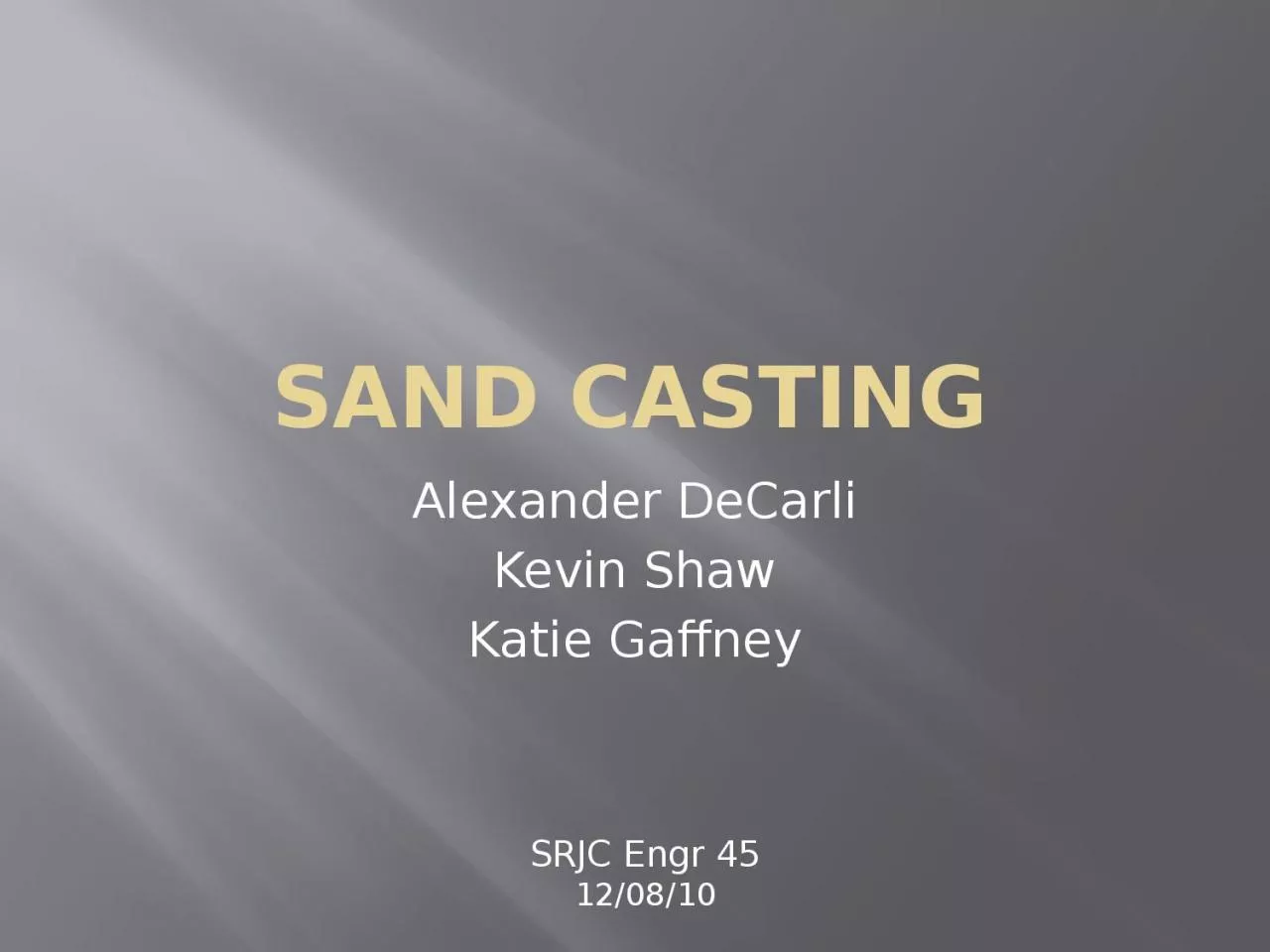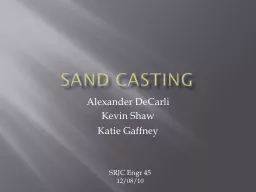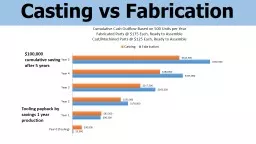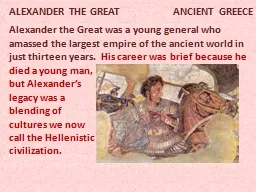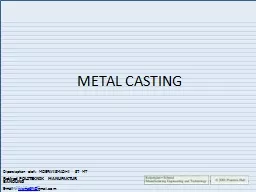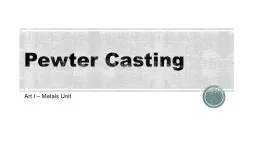PPT-Sand Casting Alexander DeCarli
Author : everly | Published Date : 2024-01-29
Kevin Shaw Katie Gaffney SRJC Engr 45 120810 Early History The oldest known cast in existence is a copper frog from 3200 BCE in Mesopotamia Other early casts from
Presentation Embed Code
Download Presentation
Download Presentation The PPT/PDF document "Sand Casting Alexander DeCarli" is the property of its rightful owner. Permission is granted to download and print the materials on this website for personal, non-commercial use only, and to display it on your personal computer provided you do not modify the materials and that you retain all copyright notices contained in the materials. By downloading content from our website, you accept the terms of this agreement.
Sand Casting Alexander DeCarli: Transcript
Download Rules Of Document
"Sand Casting Alexander DeCarli"The content belongs to its owner. You may download and print it for personal use, without modification, and keep all copyright notices. By downloading, you agree to these terms.
Related Documents

